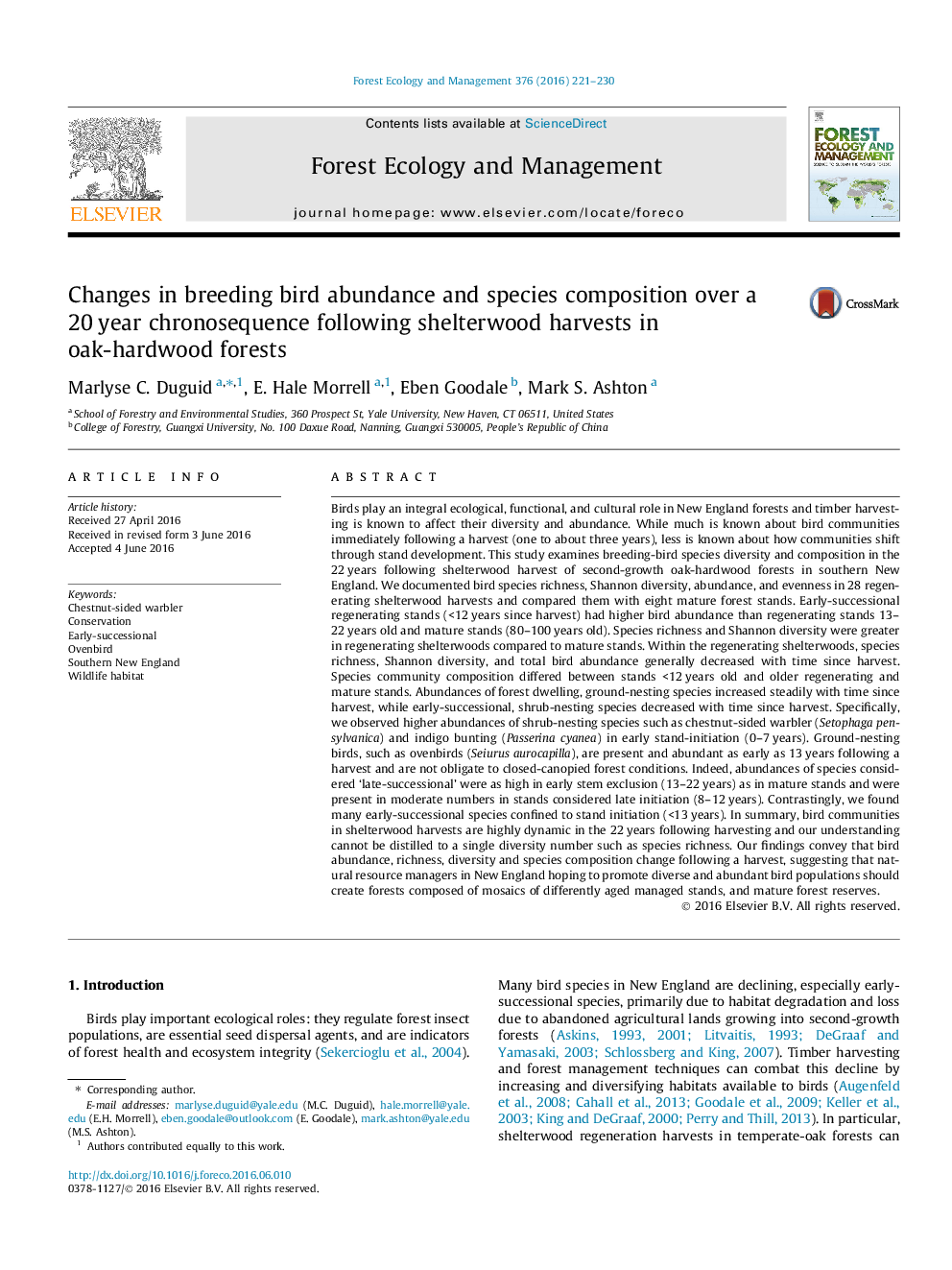| کد مقاله | کد نشریه | سال انتشار | مقاله انگلیسی | نسخه تمام متن |
|---|---|---|---|---|
| 6542128 | 159145 | 2016 | 10 صفحه PDF | دانلود رایگان |
عنوان انگلیسی مقاله ISI
Changes in breeding bird abundance and species composition over a 20Â year chronosequence following shelterwood harvests in oak-hardwood forests
ترجمه فارسی عنوان
تغییرات فراوانی پرورش پرندگان و ترکیب گونه ها در طی یک دوره 20 ساله کروموزوم در سال های پس از برداشت پناهگاه های جنگلی در جنگل های بلوط و چوب جنگلی
دانلود مقاله + سفارش ترجمه
دانلود مقاله ISI انگلیسی
رایگان برای ایرانیان
کلمات کلیدی
موضوعات مرتبط
علوم زیستی و بیوفناوری
علوم کشاورزی و بیولوژیک
بوم شناسی، تکامل، رفتار و سامانه شناسی
چکیده انگلیسی
Birds play an integral ecological, functional, and cultural role in New England forests and timber harvesting is known to affect their diversity and abundance. While much is known about bird communities immediately following a harvest (one to about three years), less is known about how communities shift through stand development. This study examines breeding-bird species diversity and composition in the 22Â years following shelterwood harvest of second-growth oak-hardwood forests in southern New England. We documented bird species richness, Shannon diversity, abundance, and evenness in 28 regenerating shelterwood harvests and compared them with eight mature forest stands. Early-successional regenerating stands (<12Â years since harvest) had higher bird abundance than regenerating stands 13-22Â years old and mature stands (80-100Â years old). Species richness and Shannon diversity were greater in regenerating shelterwoods compared to mature stands. Within the regenerating shelterwoods, species richness, Shannon diversity, and total bird abundance generally decreased with time since harvest. Species community composition differed between stands <12Â years old and older regenerating and mature stands. Abundances of forest dwelling, ground-nesting species increased steadily with time since harvest, while early-successional, shrub-nesting species decreased with time since harvest. Specifically, we observed higher abundances of shrub-nesting species such as chestnut-sided warbler (Setophaga pensylvanica) and indigo bunting (Passerina cyanea) in early stand-initiation (0-7Â years). Ground-nesting birds, such as ovenbirds (Seiurus aurocapilla), are present and abundant as early as 13Â years following a harvest and are not obligate to closed-canopied forest conditions. Indeed, abundances of species considered 'late-successional' were as high in early stem exclusion (13-22Â years) as in mature stands and were present in moderate numbers in stands considered late initiation (8-12Â years). Contrastingly, we found many early-successional species confined to stand initiation (<13Â years). In summary, bird communities in shelterwood harvests are highly dynamic in the 22Â years following harvesting and our understanding cannot be distilled to a single diversity number such as species richness. Our findings convey that bird abundance, richness, diversity and species composition change following a harvest, suggesting that natural resource managers in New England hoping to promote diverse and abundant bird populations should create forests composed of mosaics of differently aged managed stands, and mature forest reserves.
ناشر
Database: Elsevier - ScienceDirect (ساینس دایرکت)
Journal: Forest Ecology and Management - Volume 376, 15 September 2016, Pages 221-230
Journal: Forest Ecology and Management - Volume 376, 15 September 2016, Pages 221-230
نویسندگان
Marlyse C. Duguid, E. Hale Morrell, Eben Goodale, Mark S. Ashton,
